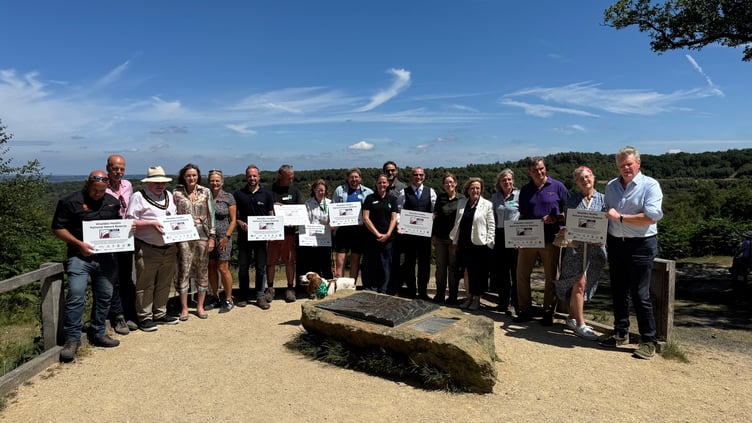A vast sweep of Surrey heathland has been designated England’s newest National Nature Reserve (NNR) — a move conservationists are hailing as a “landmark moment” in the fight to protect Britain's most threatened landscapes.
The newly established Wealden Heaths NNR, announced today by Natural England, covers 2,765 hectares of ecologically precious land, including Thursley, Hankley, and Hindhead Commons. It marks the ninth site launched under the King’s Series of National Nature Reserves, an ambitious commitment to create or expand 25 such reserves by 2027.
This reserve combines the 325-hectare Thursley NNR with more than 2,400 hectares of partner-managed land, including 1,784 hectares of Sites of Special Scientific Interest (SSSI). It also adds 921 hectares of previously undesignated land – the largest such inclusion in any English NNR. This brings England’s total National Nature Reserves to over 115,000 hectares across 223 sites.
The Wealden Heaths area includes the Devil’s Punchbowl, home to rare sand lizards, nightjars, natterjack toads and one of the last strongholds of the smooth snake
“This is now one of the top-tier nature sites,” said Harry Bowell, Director of Land and Nature at the National Trust. “It’s a place of learning, nature recovery, and inspiration — truly one of the crown jewels of the UK’s natural landscape.”
Wildfires, climate change and habitat fragmentation have placed increasing strain on Britain’s heathlands, which have declined by more than 80 per cent since the Industrial Revolution. Now, Wealden Heaths is being held up as a new model for how joined-up land management can offer a lifeline — not just to wildlife, but to people.
“Nature doesn’t respect lines on a map — and neither does fire,” explained James Herd of Surrey Wildlife Trust. “In 2022, we saw one-fifth of the land we were managing burned. This designation is about building a more resilient, better-connected landscape.”
The new status brings together a mosaic of sites managed by the National Trust, private estates, conservation charities, local councils, and Forestry England, enabling them to pool resources, expertise, and equipment.
“Bringing everything under one site improves movement and function,” said Natural England's Deputy Director Graham Horton. “It’s a major step forward in reconnecting fragmented habitats and helping nature thrive.”
For Howard Inns of the Amphibian and Reptile Conservation Trust, this is urgently needed. “Hotter summers are devastating the heather that reptiles depend on. Ten per cent of Britain’s smooth snakes live here — if we lose this habitat, we risk losing the species.”
“We need a cultural shift,” said James Herd. “People instinctively treat libraries with respect — we want that same instinct when they step into a nature reserve. Our heathlands are rarer than rainforests, and I want people to be as fiercely proud of them as the Lake District is of Windermere. This incredible landscape is on our doorstep and deserves to be celebrated.”
Harry Bowell agreed: “Our natural world is in peril. It would be arrogant to think any single organisation can fix this alone. But through collaboration, like what we are seeing here, we have a genuine chance to turn the tide.”





Comments
This article has no comments yet. Be the first to leave a comment.